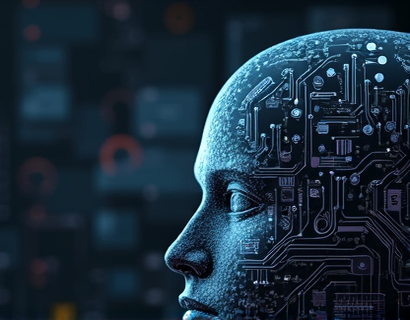AI-Powered Chat Interface: A Safe and Educational Resource for Specialized Social Services Information
In the digital age, accessing information on social services has become increasingly crucial for individuals of all ages, from adults seeking assistance to students and young learners exploring the complexities of the social services industry. An AI-powered chat interface emerges as a revolutionary tool, offering a safe and educational experience by providing verified and specialized information. This platform is designed to simplify the process of finding essential resources, thereby fostering informed decision-making and meaningful engagement with social services.
The need for a reliable and user-friendly source of information on social services cannot be overstated. Traditional methods of seeking information, such as browsing through extensive websites or contacting organizations directly, can be overwhelming and time-consuming. An AI-driven chat platform addresses these challenges by offering an intuitive and interactive way to access specialized knowledge. This technology not only streamlines the information-seeking process but also ensures that the content provided is accurate, up-to-date, and tailored to the user's specific needs.
The AI chat interface is particularly beneficial for adults who may be navigating complex social service systems for the first time, such as those seeking assistance with healthcare, housing, or financial aid. The platform's ability to understand and respond to natural language queries makes it an invaluable resource, reducing the frustration and confusion often associated with bureaucratic processes. For instance, a user can ask about eligibility criteria for a particular program, and the AI will provide a clear and concise explanation based on the user's input and the latest data available.
For students and young learners, the platform offers a unique opportunity to gain insights into the social services industry in an educational and safe environment. The content is designed to be age-appropriate, ensuring that young users can understand and benefit from the information provided. This feature is particularly important as it helps demystify social services and encourages a proactive approach to seeking help when needed. By integrating educational elements, the AI chat interface not only informs but also empowers the next generation to navigate social systems confidently.
The verification process of the information provided by the AI chat interface is a critical aspect of its design. Unlike general search engines where the accuracy of information can vary widely, this platform employs rigorous content verification to ensure that users receive reliable data. This is achieved through partnerships with reputable organizations and continuous updates based on the latest research and policy changes. Users can trust that the information they receive is not only accurate but also reflects current practices and guidelines in the social services sector.
One of the key features of the AI chat interface is its ability to cater to a diverse audience. The platform is designed to be accessible to individuals with varying levels of technical proficiency and knowledge about social services. For those who are new to the system, the AI can guide them through the basics, explaining terms and concepts in a straightforward manner. For more advanced users, the chat can delve into detailed discussions and provide in-depth analysis of specific topics, such as the intricacies of welfare policies or the nuances of mental health services.
The chat interface also prioritizes user safety, especially for children and young users. The platform includes strict content filters to prevent the dissemination of inappropriate or harmful information. Additionally, the AI is programmed to recognize and respond appropriately to sensitive topics, ensuring that the conversations remain respectful and informative. This safety measure is crucial in creating a trustworthy environment where users, particularly minors, feel secure in seeking and receiving information.
To further enhance the educational value of the platform, the AI chat interface incorporates interactive elements and resources. Users can access links to official documents, guides, and additional reading materials that provide a deeper understanding of the topics discussed. This multi-faceted approach ensures that users not only receive immediate answers to their queries but also have the opportunity to explore related subjects in greater depth. For example, a user interested in learning about child protection services can be directed to comprehensive guides and policy documents, fostering a more comprehensive understanding of the issue.
The design of the AI chat interface is user-centric, focusing on simplicity and ease of use. The conversational format makes it easy for users to engage with the platform, as they can ask questions in a natural, conversational manner. The AI's ability to understand context and follow up on previous queries ensures a smooth and coherent interaction. This user-friendly design is particularly beneficial for individuals who may feel intimidated by complex websites or technical interfaces, making the platform accessible to a wide range of users.
Another significant advantage of the AI chat interface is its ability to provide personalized recommendations based on user interactions. By analyzing the questions and topics a user engages with, the AI can suggest relevant resources and services tailored to their specific needs. This personalized approach not only enhances the user experience but also increases the likelihood that users will find the information they seek, thereby improving the overall effectiveness of the platform.
The impact of such a platform extends beyond individual users to the broader social services community. By centralizing and standardizing information, the AI chat interface helps reduce the burden on social service organizations, which often struggle to manage inquiries and provide consistent, accurate information. This centralized resource can serve as a reference point for organizations, helping them to streamline their communication processes and focus on delivering their core services. Additionally, the platform can facilitate better coordination among different service providers, ensuring that users receive comprehensive and integrated support.
For policymakers and researchers, the AI chat interface offers a valuable tool for gathering insights into public perceptions and needs. The data generated from user interactions can be analyzed to identify trends, gaps in services, and areas where additional support is required. This information can inform policy decisions and guide the development of new programs, ensuring that social services evolve to meet the changing needs of the community. The platform thus becomes a dynamic resource that not only serves individual users but also contributes to the broader improvement of the social services system.
The implementation of an AI-powered chat interface for social services information also addresses the issue of information overload. In an era where users are bombarded with vast amounts of data, the ability to quickly find relevant and reliable information is invaluable. The AI chat interface filters through the noise, presenting users with curated, verified content that addresses their specific queries. This efficiency not only saves time but also reduces the risk of users encountering misinformation, which can have serious consequences in the context of social services.
Moreover, the platform's commitment to inclusivity is evident in its design for accessibility. Features such as text-to-speech, adjustable font sizes, and compatibility with screen readers ensure that users with disabilities can access the information without barriers. This inclusive approach aligns with the broader goal of making social services information available to everyone, regardless of their physical or cognitive abilities.
The future of the AI chat interface in the realm of social services is promising, with ongoing advancements in natural language processing and machine learning enhancing its capabilities. As the technology evolves, the platform can become even more sophisticated, handling more complex queries and providing deeper insights. The integration of emotional intelligence could also allow the AI to detect and respond to users' emotional states, offering empathetic support and guidance when needed. These advancements will further solidify the platform's role as a trusted and comprehensive resource for social services information.
In conclusion, an AI-powered chat interface represents a significant leap forward in providing safe, educational, and specialized information on social services. By offering verified content, personalized interactions, and a user-friendly design, the platform empowers individuals to make informed decisions and engage effectively with essential resources. Whether for adults navigating complex systems or students learning about the social services landscape, this technology serves as a valuable tool for fostering understanding and support. As the platform continues to evolve, it will undoubtedly play an increasingly important role in enhancing access to social services and improving the lives of those who rely on them.











































